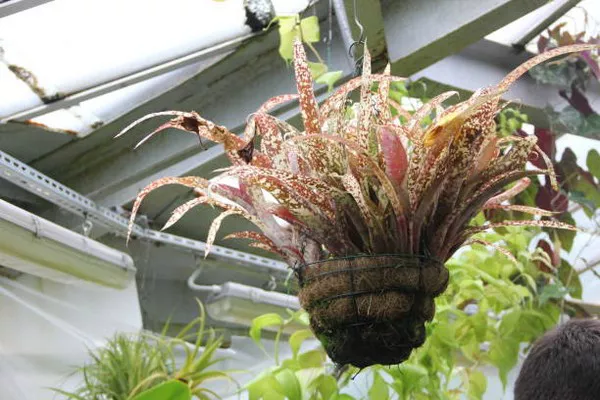Variegated plants, with their striking and often multicolored foliage, have gained immense popularity among gardeners and plant enthusiasts. These unique plants add a touch of elegance and diversity to any garden or indoor space. Variegation occurs due to a combination of genetics and environmental factors, making them both fascinating and challenging to cultivate. In this comprehensive guide, we will delve into the various aspects of obtaining and maintaining variegated plants, from propagation techniques to care and maintenance.
Understanding Variegation
Variegation is a genetic mutation that results in patches, stripes, or streaks of different colors in a plant’s leaves or stems. It can occur naturally or be selectively bred by horticulturists. The most common variegation colors are white, cream, yellow, and pink, contrasting with the plant’s dominant green pigment. Understanding the types of variegation can help you appreciate the complexity of these plants and their cultivation requirements.
Types of Variegation
Chimeral Variegation: This type of variegation occurs due to a genetic mutation within the plant’s cells. It is often unstable and may change over time as new growth develops. Chimeral variegation can be further classified into sectors or stripes, where variegation is limited to specific portions of the plant.
Stable Variegation: In contrast to chimeral variegation, stable variegation remains consistent throughout the plant’s life. It is usually a result of selective breeding or genetic modification and is more predictable in its appearance.
Obtaining Variegated Plants
There are several methods for obtaining variegated plants, depending on your preferences and expertise. Here are some common approaches:
Buying Variegated Plants: The easiest way to acquire variegated plants is by purchasing them from nurseries, garden centers, or online suppliers. Look for well-established and healthy specimens with vibrant variegation. Popular variegated plants include pothos, snake plants, calathea, and hostas.
Propagation from Variegated Cuttings: If you already have a variegated plant and wish to grow more, propagation from cuttings is a reliable method. Take cuttings with at least one node (where leaves or stems emerge), and root them in a well-draining potting mix. Ensure that the cutting retains some variegation to produce variegated offspring.
Seed Propagation: Some variegated plants can be grown from seeds, but this method is less reliable for maintaining variegation, as the offspring may not inherit the trait. However, if you’re up for a challenge and enjoy experimenting, you can try growing variegated plants from seeds obtained from variegated parent plants.
Tissue Culture: Tissue culture is a specialized technique used by nurseries and horticulturists to propagate variegated plants with consistent variegation. This method involves growing plants from tiny pieces of tissue in a controlled laboratory environment. It’s an advanced method and may not be practical for home gardeners.
Care and Maintenance
Caring for variegated plants requires attention to their unique needs, as their variegated leaves often make them more sensitive to light, temperature, and other environmental factors. Here are some essential care tips to ensure the health and vibrancy of your variegated plants:
Light Requirements: Variegated plants typically require bright, indirect light. Too much direct sunlight can scorch their delicate leaves, especially those with white or yellow variegation. On the other hand, insufficient light can lead to reduced variegation and leggy growth.
Temperature and Humidity: Maintain the appropriate temperature and humidity levels for your specific variegated plant. Most variegated houseplants thrive in a temperature range of 65°F to 75°F (18°C to 24°C) and appreciate higher humidity levels. Consider using a humidity tray or humidifier to create a suitable environment.
Watering: Water variegated plants consistently but avoid overwatering, as this can lead to root rot. Always check the moisture level in the soil before watering, and allow the top inch or two to dry out between waterings. Use a well-draining potting mix to prevent waterlogged roots.
Fertilization: Feed your variegated plants with a balanced, water-soluble fertilizer during the growing season (spring and summer). Dilute the fertilizer to half the recommended strength to prevent overfertilization, which can negatively impact variegation.
Pruning and Maintenance: Regularly prune your variegated plants to remove any non-variegated or damaged growth. This encourages new growth with vibrant variegation. Use clean, sharp scissors or pruning shears to avoid damaging the plant.
Repotting: Repot variegated plants when they outgrow their current container or become root-bound. Choose a slightly larger pot with good drainage, and refresh the potting mix. Repotting is also an opportunity to inspect the root system for any issues.
Dealing with Variegation Changes
It’s important to note that variegation can change over time due to various factors, including light exposure, growth patterns, and genetics. Here are some common variegation changes and how to address them:
Reversion: Reversion occurs when a variegated plant produces non-variegated shoots or leaves. Remove these shoots promptly to maintain the plant’s variegated appearance.
Fading: Variegated leaves may lose their vibrancy and become less colorful over time. Adjust the plant’s care routine to provide the ideal conditions for variegation.
Stability Issues: Some variegated plants, especially those with chimeral variegation, may display instability, with variegation patterns changing unpredictably. In such cases, patience and consistent care are essential.
Conclusion
Cultivating variegated plants can be a rewarding and visually captivating experience for gardeners and plant enthusiasts. Understanding the types of variegation, obtaining variegated plants through various methods, and providing the right care and maintenance are crucial steps in ensuring the health and vibrancy of these unique botanical wonders. With the right knowledge and dedication, you can create a stunning collection of variegated plants that will be the envy of any garden or indoor space.


